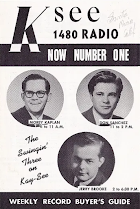By Doug McIntosh & Paul Hobbs
Paul and I were talking the other day on the phone and in our conversation he was wondering when Loggins & Messina were coming up in the 50 year blog series? He said something like, "Loggins & Messina were a pretty big deal for me in my senior year of high school."
That got me thinking too. Loggins & Messina's debut album, Sittin' In surely must have come out by the spring of 1972?
I get 99% of my 'this month 50 years ago' from Wikipedia. Could they have screwed up and missed such an important album? So I went to the way back on Wikipedia, and low and behold I found the album sittin' in November, (1971 in Music). Yeah guess who screwed up!
With that news, the proof-reader gal over hearing the conversation on my iPhone in speaker mode, squealed my mistake to the new owner of Monday Monday Music™some guy named Musk. Anyway, Musk fancies MMM and is attempting a hostile takeover bid estimated to be around $44 and a song to be named later.
So with the office mole's intel, the SOB fired me on the spot through one of his stupid tweets. He then cooled down and recanted, but hired Paul to be a staff writer and was told, "To watch Mr. McIntosh very carefully."
Late breaking news on the MMM takeover... It appears Musk (wasn't that the worst cologne ever from the 1970's) is now saying he won't buy the blog to drive the price down further. Stay tuned loyal readers...
So I guess, Paul takes it over from here... Actually I've been mentoring Paul, which is kind of funny because he's older than me... Anyway, I got him up to speed in how things work around here– where you basically retell stories of your childhood and youth because your long-term memory is the last thing to go. Anyway, here's Paul.
I was working after school at the Tognazzini Box Co. my senior year in high school. We blasted a big radio, living room console type, that my parents had donated when they upgraded our household system. KSEE reverberated through the echoey warehouse. I remember a recurring advertisement for a concert featuring a band I was unfamiliar with, Loggins and Messina. They played parts of 3 selections from their newly released album and 2 of the 3 had me hooked, 'Danny’s Song' and 'Nobody But You.' I got myself a ticket and accompanied by Ron Zieman, Gary Hill, and Doug McIntosh went to see them play at Cal Poly in SLO. We were summarily impressed and in one combination or another, some including Paul Tognazzini, of Box Co. fame, proceeded to see them play four more times on the central coast within the next year.Loggins and Messina provided a brand new opportunity. We were hearing a band that neither one of us had heard before. It gave us some songs to learn, we did 5 from this album alone. And, they exhibited several qualities that we, humbly, counted among our strengths.
They were essentially a duo. Both were lead singers. There were usually two distinct guitar parts to choose from. Danny would play the more difficult one. They had a folkie quality and at the same time a country feel. We did a pared down version of their songs, of course, as they had a large band and a couple of spare singers when needed. However, with the addition of a singing bass player, Sean Landers, who came along in pretty short order, we could rock a bit more and do the bigger production numbers serviceably well. Their material was very popular with our audiences so they were quite the boon to our fledgling act.
Enjoy the playlist my friends.
Here is the YouTube Music app which is great for listening to this playlist on your phone. Click on the text link below.
https://music.youtube.com/playlist?list=PLE7OYmYUxGQe7ftS05MLtCMnEFwo0Y5DA&feature=share


























